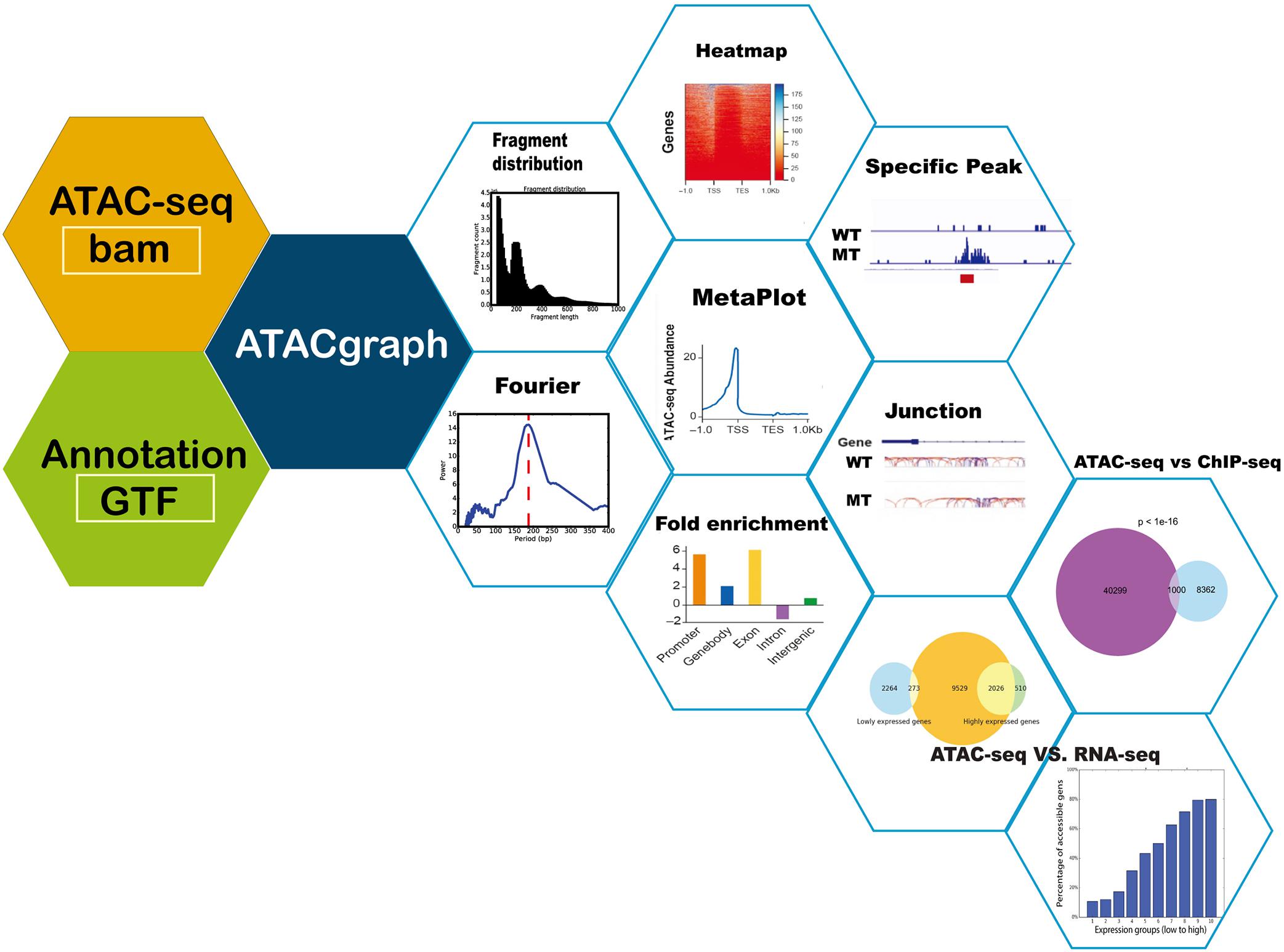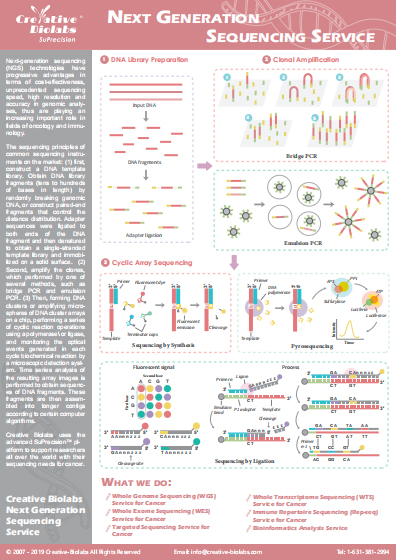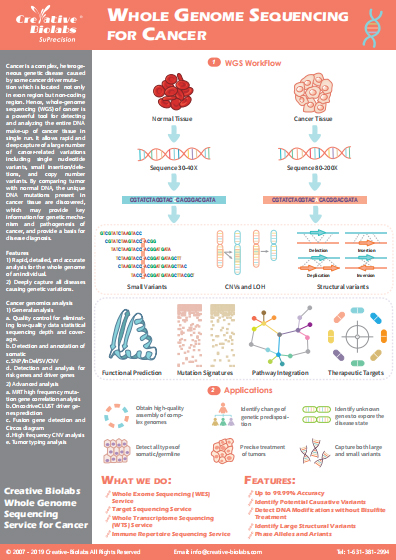
Single-Cell ATAC Sequencing Service
Single-cell ATAC sequencing (scATAC-seq) is designed to identify genome-wide chromatin accessibility and nucleosome positioning at the single-cell resolution, which allows detecting changes in chromatin accessibility between cell subsets. Creative Biolabs is a world-leading service provider that focuses on cancer research based on high-throughput sequencing technologies. With highly skilled and committed experts and state-of-the-art technologies such as 10x Genomics and BD Rhapsody, we are fully confident in offering the best scATAC-seq services to support cancer research.
Introduction of scATAC-seq
ATAC-seq is short for "assay for transposase-accessible chromatin with high-throughput sequencing". The ATAC-seq approach relies on the construction of a next-generation sequencing (NGS) library using a highly active transposable enzyme Tn5. The use of Tn5 transposase can simultaneously tags and fragments DNA sequences in open chromatin regions, thus making it possible to sequence and analyze the genome-wide chromatin accessibility by NGS technologies. With the advent of single-cell technologies, the investigation of chromatin accessibility at single cell resolution became possible owing to the development of scATAC-seq. The scATAC-seq allows simultaneously identifying cell-type-specific chromatin accessibility in a single sample containing a heterogeneous cellular population, providing a deeper understanding of gene regulatory mechanisms. Especially in cancer research, scATAC-seq provides a powerful tool for analyzing epigenetic regulation in the progression of various cancers. Using scATAC-seq, scientists identified the presence of regulatory heterogeneity in the epigenome of acute myeloid leukemia cells at distinct time points during cancer evolution.
 Fig.1 ATAC-seq analysis.1
Fig.1 ATAC-seq analysis.1
scATAC-seq Services
We have established a standardized operating laboratory and a high-throughput single-cell sequencing technology platform including Illumina HiSeq 2500, HiSeq 4000, 10X Genomics Chromium, and BD Rhapsody. Our professional experts have accumulated rich experience in scATAC-seq and can provide the best and comprehensive scATAC-seq services to support your cancer research. Our services include preparation of single cell suspension, cell partitioning, library preparation, sequencing, and bioinformatic analysis.
Bioinformatic analysis including but not limited to:
- QC for raw data
- Clean data mapping
- Peak analysis including peak calling, distribution of peak length, distribution of peak depth, and distribution of peak enrichment
- Cell cluster and classification
- TF-motif identification and clustering analysis
- Peak annotation including analysis of peak related genes and GO/Pathway enrichment analysis of peak related genes
- Transcriptome factor binding region analysis
Sample Requirement
- Sample type: cell lines, primary cells, fresh and frozen tissue, PBMC
- Cell size: diameter low than 40 μm
- Cell concentration: 5×105/mL~1.2×106/mL
- Cell vitality: >90%
- Cell number: >1×105/mL/sample
- Storage and transportation: Stored in liquid nitrogen, transported on dry ice
Advantages
- Well-established scATAC-seq technology that allows detecting chromatin accessibility at a single-cell resolution
- High capture efficiency: single nuclei capture efficiency is up to 65%
- Ultra-high flux: the cell detection range of a single sample is 1000-10000
- Sample types are diverse including cell lines, primary cells, fresh and frozen tissue, and PBMC
- Rich experience in preparation of a single-cell suspension of multi-species and multi-tissue types
- Providing one-stop services from preparation of cell suspension to high-quality data delivery
If you are interested in our services, please feel free to contact us for more details.
Reference
- Lu, Rita Jui-Hsien, et al. "ATACgraph: profiling genome-wide chromatin accessibility from ATAC-seq." Frontiers in Genetics11 (2021): 618478. Distributed under open access license CC BY 4.0, without modification.




